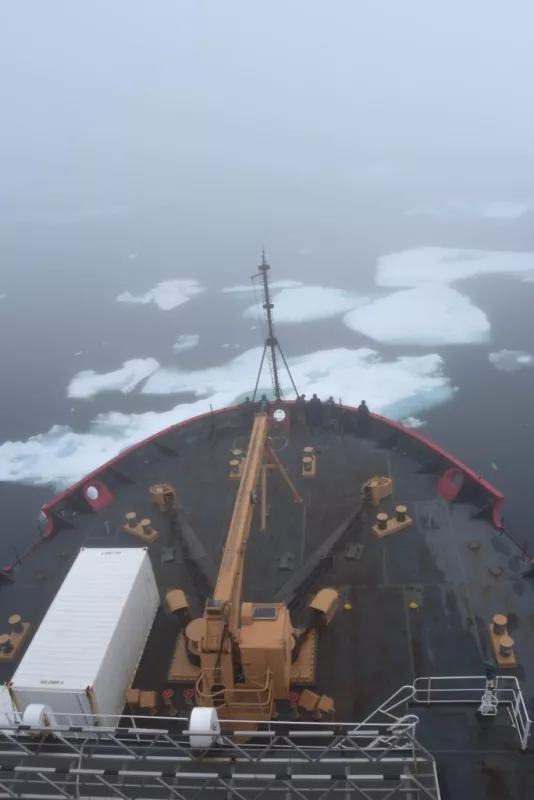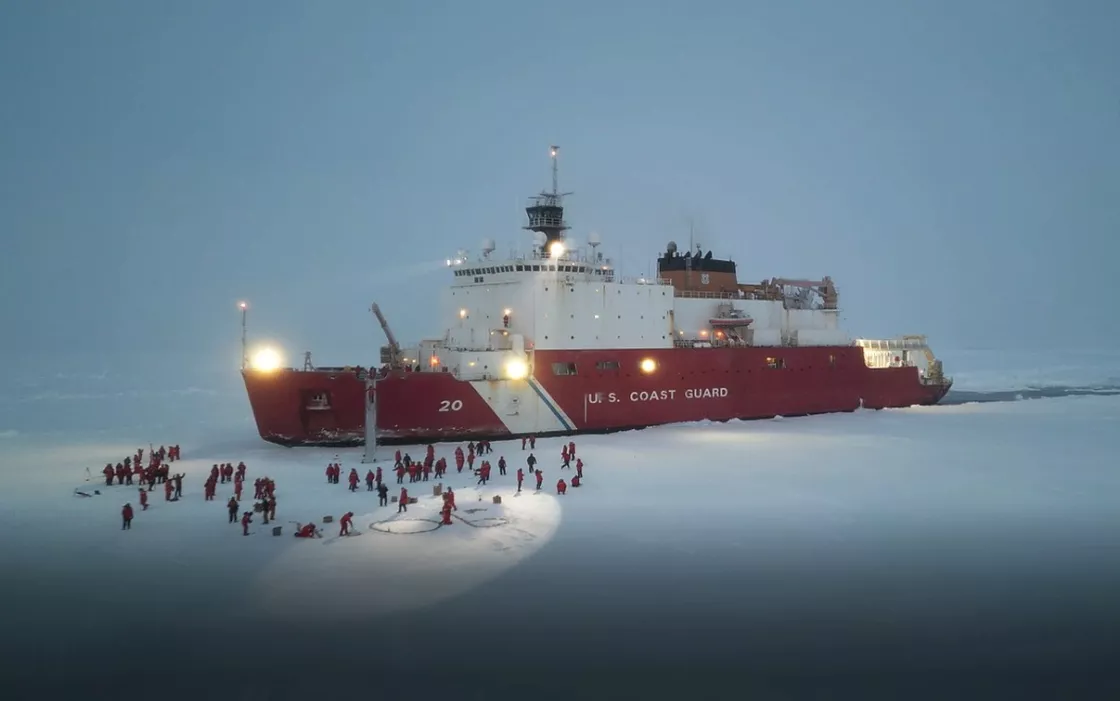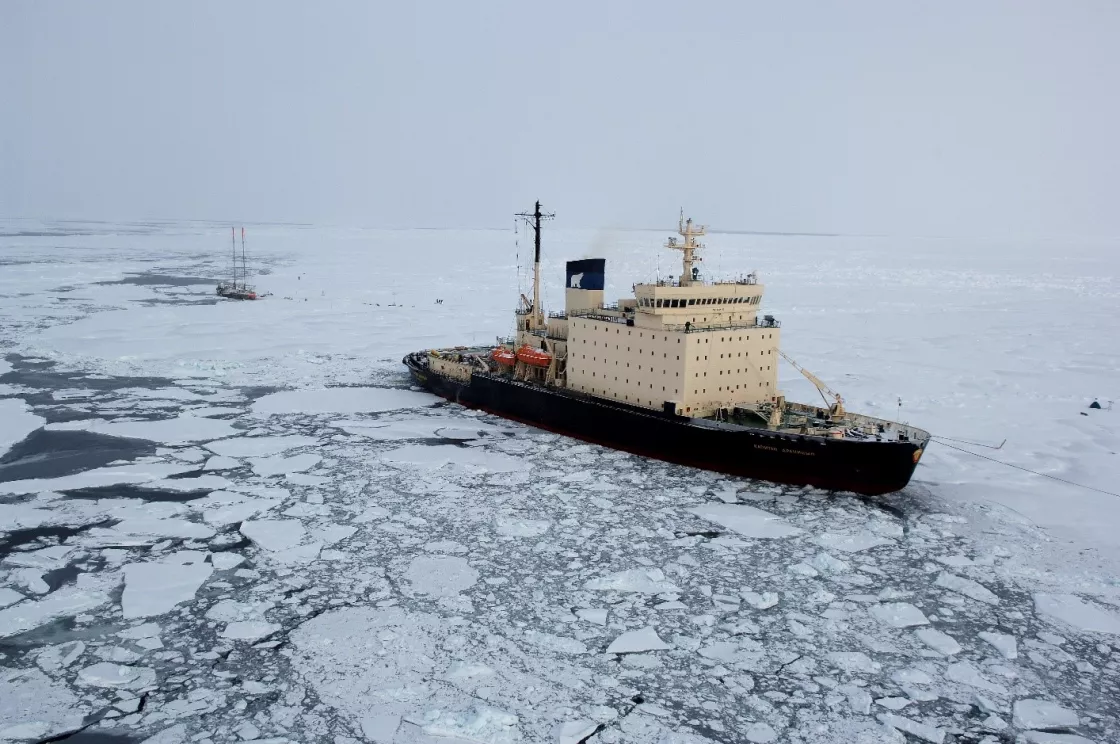In summer months, icebreaking ships head north into the Arctic Ocean, tearing through the sea ice and leaving trails of open water in their wakes. Readers occasionally write in to ask us whether the trails left by these ships contribute to the melting of sea ice. According to NSIDC senior research scientist Walt Meier, even as icebreaker activity increases in the Arctic, the amount of sea ice broken by icebreakers is a drop in the bucket compared to expanse of the Arctic Ocean.
Breaking trail
The light surface of Arctic sea ice reflects most of the sun’s rays, helping to keep the Arctic and Northern Hemisphere cool. Dark, open water has a low albedo—or reflectivity, and so it absorbs more heat than sea ice from the sun. Researchers have found that as Arctic sea ice melts in summer, leaving more areas of open water, the open water absorbs more of the sun’s energy, warming the water and melting more ice. This is one of the positive feedback loops that scientists say could lead to increased warming and sea ice loss in the Arctic.
Meier said, “Even in the summer, when the high albedo snow has melted from the ice surface and pools of water, or melt ponds, have formed on the ice, the sea ice still reflects at least 50 percent of the sun’s energy. The ocean only reflects about 10 percent of the sun’s energy, and 90 percent is absorbed, warming the ocean and the atmosphere.” It makes sense that a strip of open water left by an icebreaker would absorb more heat from the sun, and melt away the sea ice along that trail. Meier said, “It’s certainly true locally, that the open water in the wake of an icebreaker absorbs more of the sun’s energy than the ice around it.” But what is the effect on the ice cover as a whole?
How much ice does an icebreaker break?
Meier decided to crunch some numbers and find out. While his numbers are an estimate, they provide a helpful comparison of just how much icebreakers might contribute to summer ice loss. Meier said, “In late June, when the sun’s energy is strongest, the total sea ice extent is around 10 million square kilometers (3.9 million square miles). An icebreaker cruising through the ice for 1,000 kilometers (620 miles) and leaving an ice-free wake of 10 meters (33 feet) would open an area of water 10 square kilometers (3.9 square miles) over the entire cruise. In contrast, the Arctic sea ice cover decreases by an average of over 9 million square kilometers (3.5 million square miles) each year during its melt season—an area larger than the contiguous United States.
Even as icebreaker activity increases—for example, Russia maintains the world’s largest fleet of more than 50 icebreakers in 2023 compared with fewer than 10 icebreakers a decade ago—these numbers do not significantly change. Many of Russia’s icebreakers are being used to escort ships through the Northern Sea Route, and they tend to follow the same channel. This means that even though there may be multiple icebreakers operating at the same time, they are not breaking much new ice, which would only occur if the ice drifted and blocked the channel. So, Meier said, “The actual contribution is miniscule—only one part in a million of the total ice cover.”
Even if the amount of ice broken increased by an order of magnitude, say from 10 square kilometers (3.86 square miles) of ice broken by a single icebreaker to 100 square kilometers (38.61 square miles) of ice broken by 10 icebreakers, the amount of ice broken would still be minuscule compared to the vastness of the Arctic Ocean. Because icebreakers have such a minimal effect on sea ice, they also have a minimal effect on climate.


